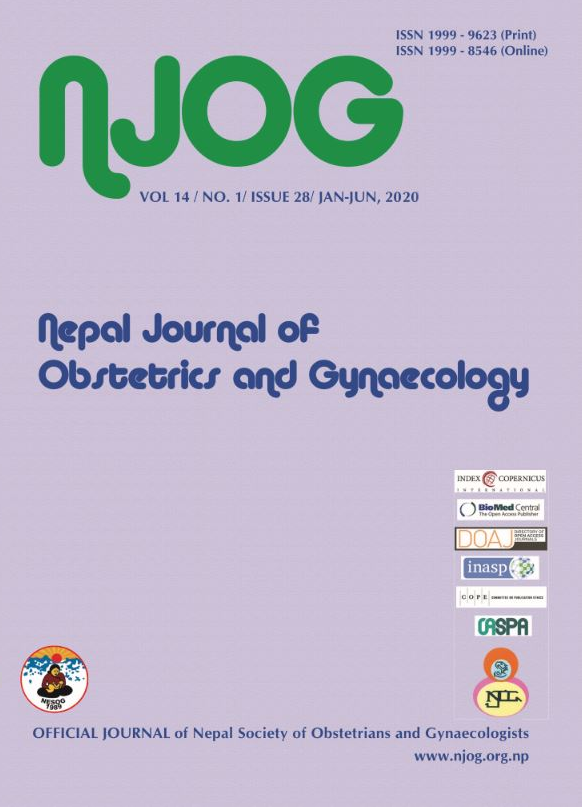Quality of life of postmenopausal women of Kaski district
Abstract
Aim: To assess menopause specific quality of life of postmenopausal women.
Method: This descriptive survey was carried out among postmenopausal women aged 40 to 60 years residing in a municipality of Kaski district of Nepal. Data was collected from 150 women meeting the criteria through face to face interview using a structured questionnaire consisting of socio-demographic items and Menopause-Specific Quality of Life (MENQOL) scale.
Results: Respondents’ mean age and SD was 52.83±4.19 years and their mean menopausal age and SD was 47.12±4.34 years. The most common menopausal symptom reported by the respondents was decrease in physical strength (82.70%) and the least frequent symptom was increase in facial hair (7.40%). The mean scores and SD of MENQOL for physical, psychosocial, sexual and vasomotor domains were 1.67±0.42, 1.46±0.42, 1.31±0.47 and 1.27±0.57 respectively. Significant differences were detected in vasomotor, psychosocial and physical domain score according to physical activity, living status and body mass index respectively (p=0.05).
Conclusions: Based on findings, it is concluded that all the postmenopausal women tend to have at least one or more menopausal symptoms. Physical domain is the most affected domain of QOL among the postmenopausal women. The presence of menopausal symptoms affects the quality of life of women adversely that warrants focused teaching and counselling.
Keywords: menopause, menopausal symptoms and menopause specific quality of life
Downloads
Downloads
Published
How to Cite
Issue
Section
License
Copyright on any research article in the Nepal Journal of Obstetrics and Gynaecology is retained by the author(s).
The authors grant the Nepal Journal of Obstetrics and Gynaecology a license to publish the article and identify itself as the original publisher.
Articles in the Nepal Journal of Obstetrics and Gynaecology are Open Access articles published under the Creative Commons CC BY-NC License (https://creativecommons.org/licenses/by-nc/4.0/)
This license permits use, distribution and reproduction in any medium, provided the original work is properly cited, and it is not used for commercial purposes.



